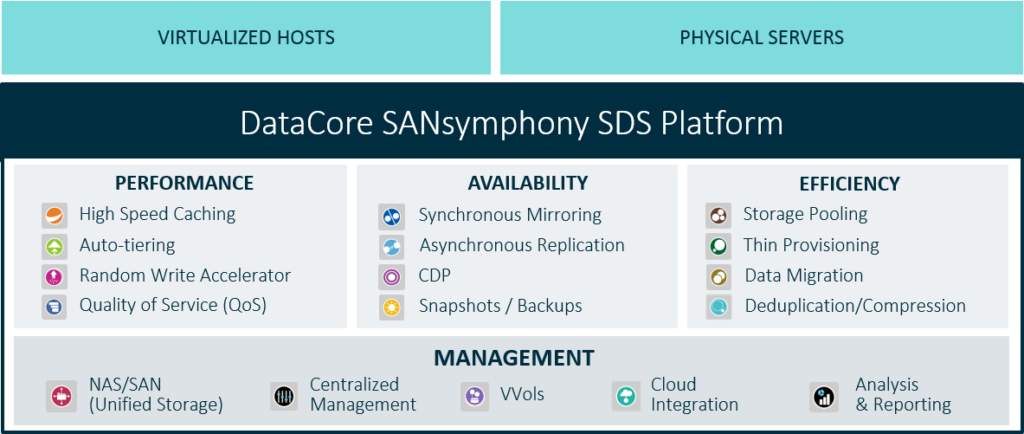Data Availability Is Everything
It’s no secret. 100% availability from an enterprise storage infrastructure is non-negotiable. Your customers demand it. The company’s executive team expects it. Neither knows or cares how the data is stored or how it is accessed. They just want it, when they want it.
The point is, you simply can’t afford to have downtime or a sluggish storage system. Even in the face of a natural or manmade disaster, downtime is unacceptable. However, at the same time, it’s impossible to ignore the increasing complexity around data storage. If you’re like many IT managers or solution providers, you’re being tasked with finding new, scalable and cost-efficient ways to simplify how business applications access, recover and protect your stored data.
Software to Unify All Your Data Storage Sources
Depending on your IT maturity level, a software-defined storage (SDS) approach that provides the foundation for hyperconvergence is one way to modernize and build a high-performance, always-on data center. Or you may have plans to implement a hyperconverged infrastructure (HCI), which is a fast becoming best practice in dealing with today’s massive storage challenges. Using an SDS solution lets you modernize your data center by unifying all your data sources with an underlying layer of software, helping you get the high performance and availability required by today’s users.

Download our Whitepaper: Top 3 Challenges Impacting Your Data and How to Solve Them
Your Biggest Data Storage Challenges
As your data storage solution matures, the three biggest challenges you’ll likely encounter include how to:
- Reduce or eliminate storage-related downtime
- Increase storage capacity on demand
- Improve performance and ensure fast access to applications
Your goal as an IT manager or service provider is to ensure data availability during catastrophic failures within the storage architecture, whether from hardware malfunctions, site failures, regional disasters, or user error. As storage demands continually change, you also need to have the ability to optimize existing storage capacity and safely scale the storage infrastructure up and out. Not to mention, you also have to understand how to reduce latency and speed up response times when reading and writing data to disks to improve overall storage performance.
To get detailed information about how we can help your business, download the white paper, Top 3 Challenges Impacting Your Data and How to Solve Them.
We’ve helped over 10,000 customers solve these kinds of data storage challenges, so don’t wait any longer and hop on the bandwagon today!